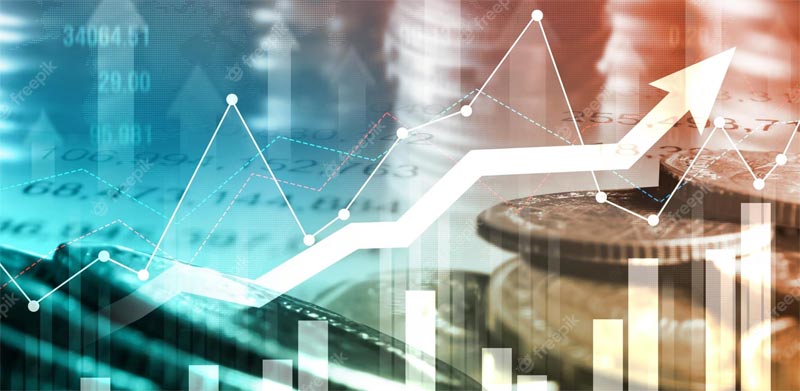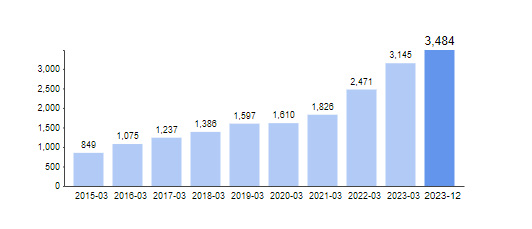Great Facts To Deciding On Free Ai Stock Prediction Sites
Great Facts To Deciding On Free Ai Stock Prediction Sites
Blog Article
Ten Tips For How To Assess The Trading Costs, As Well As Execution Timings Of An Ai Stock Trading Forecaster
Costs of trading and execution times are crucial when testing an AI prediction of stock prices since they directly affect the profit. Here are 10 important strategies for evaluating these aspects.
1. Analyze the Impact of Transaction Costs on Profitability
Why: Trading costs like slippage, commissions and fees, could erode returns, particularly for high-frequency trading.
What should you do: Determine whether the model takes into account all trading costs in its profit calculations. Effective predictors simulate the actual costs of trading to ensure that the performance metrics are accurate.
2. Assess the Model's sensitivity to Slippage
Slippage - the difference in price between the date you place an order, and when it's completed - can negative affect profits.
It is possible to do this by ensuring that the model includes slippage calculations based on the market liquidity, the size of orders and other elements. Models that can dynamically adjust for slippage have a higher chance of predicting realistic returns.
3. Review the frequency of trading in relation to expected returns
Why? Frequent trading can cause higher transaction costs and lower net profits.
How do you determine whether the model's trading rate is justified by the profits it generates. Models that maximize trading frequency are able to balance losses and gains by maximising net profitability.
4. Look for market impact on Big Trades
Why: Large trades can change market prices, which can result in a higher cost for execution.
What to do: Ensure that the model accounts for the impact of market for large orders. Particularly, if it's focused on stocks with high liquidity. Market impact analysis helps traders avoid from overestimating their profits.
5. Review the settings for Time-inforce and trade duration flexibility
Why: Trade execution and timing are affected by the time-in-force setting like Immediate or Cancel (Good until cancelled) and Good Till Cancelled.
What: Ensure that the model uses appropriate time-in-force settings to suit its strategy, and allows it to trade in the event of favorable conditions without excessive time delays.
6. Examine the latency of execution timing
Why: In high frequency trading, delays (between signal generation and trade implementation) can lead to missed opportunities.
What can you do to ensure that the model is designed to run at a low latency or if it takes into account delays that could occur. In high-frequency strategy, accuracy and profit are contingent on the ability to minimize the amount of latency.
7. You can find real-time monitoring of execution
Why: Real-time monitoring of execution ensures that transactions are completed at the expected price, minimising adverse timing impacts.
What should you do? Confirm that the model is equipped with real-time monitoring for trades in order to prevent execution at a disadvantageous price. This is essential for assets that are volatile, or strategies that depend on the timing of transactions.
8. Confirm Use of Smart Order Routing for the Best Execution
Why? Smart algorithmic ordering (SOR), find the most efficient locations to complete orders. The prices are increased and expenses are cut.
How: To improve fill rates and reduce slippage, make sure that your model incorporates SOR or simulates it. SOR aids in improving the efficiency of the model by incorporating various exchanges and liquidity pools.
9. Examine the inclusion of the Bid-Ask Spread Costs
The reason is that bid-ask spreads, particularly in less liquid markets are a direct expense of trading and can have a negative impact on profitability.
Check that the model accounts for bid-ask spread costs, as not taking them into account could result in overstating the anticipated returns. This is especially important when models trade in non-liquid markets or for stocks with smaller sizes.
10. Examine performance metrics in the light of delays in execution
Reason: Accounting delays during execution provides a realistic view of the model's performance.
How: Check if performance indicators, such as returns and Sharpe ratios, account for potential execution delays. Models that account for the effects of timing are more accurate in assessing the performance.
By carefully reviewing these factors and analyzing these aspects, you'll be able to better understand how an AI trading forecaster handles its cost of trading and the timing aspects. This will help ensure that its profitability estimates in real market conditions are realistic. Take a look at the top rated official source about Goog stock for blog advice including best site for stock, best ai stock to buy, ai in trading stocks, stock market investing, stock technical analysis, artificial intelligence stock price today, ai stock picker, ai ticker, learn about stock trading, top ai stocks and more.
10 Top Tips To Assess Tesla Stock With An Ai Prediction Tool For Stock Trading
Understanding the business process of Tesla as well as the market's developments and external influences can impact its performance. Here are 10 top-notch tips to effectively assess Tesla shares using an AI trading system:
1. Know Tesla's Business Model and Growth Strategy
Why: Tesla competes in the electric vehicle (EV) business and has expanded its product line to include energy products and service.
You can do this by becoming familiar with Tesla's principal business areas, such as vehicle sales, energy production and storage, software services, etc. Knowing the company's business strategy will help the AI to anticipate possible income streams and share.
2. Market and Industry Trends
Why Tesla's performance is heavily affected by the developments in the automotive and renewable energy industries.
How can you make sure that the AI model is analyzing relevant trends in the industry, such as EV adoption rates in addition to government regulations and technological advancements. It can be valuable to evaluate Tesla's performance against those of other companies.
3. Earnings report impact on the economy
Earnings announcements are a major reason for the stock's price fluctuation, especially in companies with high growth such as Tesla.
How to monitor Tesla's earnings calendar and analyze the way that earnings surprises in the past have affected stock performance. Include guidance provided by Tesla in the model to assess the future outlook.
4. Use indicators for technical analysis
Why technical indicators are helpful for capturing trends in the short term and prices of Tesla's shares.
How do you incorporate important technical indicators, such as moving averages, Relative Strength Index (RSI) and Bollinger Bands into the AI model. These can be used to determine entry and exit levels in trades.
5. Macro and microeconomic variables are analysed
Tesla's sales could be affected adversely by factors such as inflation, consumer spending and interest rates.
What should you do: Ensure that the model includes macroeconomic and microeconomic metrics (e.g. growth in GDP and unemployment rates) and sector-specific metrics. This will improve the ability of the model to predict.
6. Analyze Implement Sentiment
What's the reason? Investor sentiment, particularly in volatile sectors such as the tech and automotive industries, can have a significant influence on the price of Tesla's stock.
How to: Use sentimental analysis from news articles, social media and analyst reports, financial news as well as other sources to determine public perception about Tesla. Incorporating this qualitative data can provide additional context for the AI model's predictions.
7. Keep an eye out for changes to regulations and policies.
What is the reason? Tesla operates in an industry which is highly regulated and government policy changes can have an impact on its business.
How do you monitor policy developments relating to incentives for renewable energy, electric vehicles as well as environmental regulations. Include these aspects when assessing the impact of Tesla's operations.
8. Perform backtesting of historical data
Why: Backtesting allows you to evaluate the performance of an AI model based on the past price fluctuations and occasions.
How to: Use historical stock data from Tesla's shares to test the model's predictions. Comparing model outputs with actual performance will allow you to determine accuracy and robustness.
9. Examine the Real-Time Execution metrics
Why: Efficient execution is crucial for capitalizing on price movements in Tesla's stock.
What to do: Track the performance of your indicators, such as the rate of fill and slippage. Check how well an AI model predicts the ideal entry and departure points for Tesla-related trades.
Review risk management and sizing of positions strategies
Tesla's volatility is an important reason for why risk management is vital to protect capital.
How do you ensure that the model incorporates strategies for positioning sizing and risk management that are based on Tesla's volatility and overall risk in your portfolio. This will help minimize potential losses while maximizing returns.
By following these tips You can evaluate the AI predictive model for stock trading to understand and forecast changes in Tesla's stock, ensuring it remains accurate and relevant in changes in market conditions. See the most popular Tesla stock url for website info including website stock market, ai in the stock market, stock market analysis, ai on stock market, ai stock price prediction, best stock websites, ai stock price, chat gpt stocks, ai and stock market, artificial intelligence stocks to buy and more.